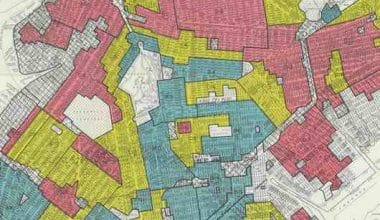The term “economic system” refers to a set of rules that a group or government uses to decide who gets what goods and services and how much of each they get. This article talks about the types and examples of the major economic system of the United States.
Overview
An economic system is how the government of a country manages the production, distribution, and use of the resources in its economy. The economic system keeps an eye on things like land, capital, labor, and natural resources that are used to make things.
The economic system of a community is made up of many different kinds of organizations, agencies, companies, ways of making decisions, and consumer habits.
Countries all over the world use economic systems to share the wealth and make it easier to trade goods and services. Their goal is to control the four things that make things get made: workers, money, business owners, and things.
When I say “production factors,” I mean a company’s people, money, and connections to other entrepreneurs. Every company needs access to relevant information and data, as well as sufficient funds to keep operations running smoothly. The way a society divides up its resources and the kinds of production inputs it will use depend on its economic structure.
More Details Here
The main goal of the economy is to figure out what a country or region needs in terms of resources and then find the best way to meet those needs. This need comes about because of how supply and demand work in an economy. The most important parts of the setup are what to make, how much to make, how to make it, and who to give it to. When you know about these four parts, it’s easier to understand what an economic system is.
If you tell the system what to make, it will focus on making the goods and services that people in your area want most. The system decides in what order to make the products based on how much people want them. The second has to do with the amount of output.
How well-known a product is will tell you the answer to this question. If a lot of people want something, it needs to be made in large quantities. If not, production either slows down or doesn’t keep up with demand.
The next part is the method of production, which includes everything from human labor to financial capital. In contrast to the other two, which are chosen by the policies that the government puts in place, the companies themselves choose the equipment and methods they use to make things.
The last thing on the list is who to give it to. It depends on what income bracket a person lives in. Products made for people with higher incomes are only sold to those with higher incomes, and products made for people with lower incomes are only sold to people with lower incomes.
What Is the Economic System of the United States
Capitalism is the name for the way the United States’ economic system works. Simply put, in a capitalist society, private individuals rather than the government own the vast majority of enterprises. In the United States, it is up to each company to decide what products to sell. They decide how much goods and services should cost.
The next step is for customers to choose the items they want to buy. Also, this kind of system is called a free market economy. No one in the government has much power over the economy. The economy of the United States is based on capitalism and a free market.
History of the United States Economic System
At the beginning of the 20th century, a new period called the Progressive Era began. During this time, the federal government played a bigger role in the American economy. Antitrust laws were passed, and the federal government took control of important industries like steel and railroads. The government also made sure that workers and unions were safe.
Franklin Delano Roosevelt’s New Deal made the government more involved in the free market in the 1930s.
Bypassing the Social Security Act, for example, the federal government started giving out benefits for retirement and unemployment. It also set the stage for the National Labor Relations Act, which protects the right to form unions and the right to negotiate with employers as a group.
During the 1960s, the government’s role in the economy also grew. Around this time, the government started the Medicare and Medicaid programs to help people over 65 and with low incomes get health insurance. Also, the Equal Employment Opportunity Commission was made to keep an eye on workplace discrimination.
Types of Economic Systems
The world economy is very varied. Even though they have some things in common, each has its own personality. Different economies run on different assumptions and under different conditions. The following types of economic system examples are listed below:
#1. Traditional Economic System
In the standard economic model, products, services, and labor all fit into standard patterns. It depends a lot on people, and there aren’t many ways to specialize or divide up the work. The most basic and old-fashioned of the four main types is the traditional economic system.
There are still places with an old-fashioned way of doing business. This usually happens in places where agriculture or traditional ways of making money are the main sources of income, like rural areas in developing and underdeveloped countries.
Traditional economic systems tend to give out goods and services in a very unequal way. No matter how they got there, there aren’t many resources in the area. This means that the traditional system, unlike the other three, can’t make a surplus. Still, the traditional economic system has been around for a long time because it is simple. Also, its small output means that, unlike the other three systems, almost no resources are wasted.
#2. Market Economic System
Market economic systems are based on the idea of free markets. That’s right; the government stays out of it all. The government doesn’t have much control over the economy and stays out of key areas. Instead, the people make rules based on the laws of supply and demand.
Most of what we know about economies based on the free market comes from books. So, there is no such thing as a free market system. Why? When it comes to government interference, it happens in all economic systems, but to different degrees. For example, most countries have laws against monopolies and other unfair business practices.
At least in theory, a market economy can help things grow quickly. Others argue that a market economic system is the most conducive to growth. The biggest problem with a market economy is that it gives people and businesses with a lot of resources too much political and economic power. People who are financially successful have more than their fair share of the world’s resources.
#3. Mixed System
In a mixed system, there are parts of both market economies and command economies. Due to this, the term “dual systems” can also mean “mixed systems.” In other situations, it means a market with a lot of rules. A number of advanced countries in the western hemisphere use a hybrid system. There are a few services provided by the government, but most businesses are run on their own.
Mixed systems are the norm everywhere in the world. People think that a mixed system has the best parts of both the market system and the command system. But in real life, it’s hard for mixed economies to find a good balance between free markets and government oversight. When it comes to telling people how to live, governments often do much more than is necessary.
#4. Command Economic System
In a command economic system, there is a strong, centralized authority (usually the government) that has a lot of power over the economy. A command economic system, also called a planned system, is often used by communist regimes. In this system, the government controls all parts of production.
When an economy has a lot of resources, it’s more likely to use a command economic structure. The government has to step in and take charge of the assets that are available. In an ideal world, only one government would keep a close eye on precious metals and oils. Other, less important parts of the economy, like agriculture, are run by people.
As long as the people in charge are looking out for the whole population when they use their power, the command system should work well. Command economies are not as flexible as other economic models. Because the country is led from the top down, people are resistant to change. Since they aren’t quick enough to change with the times, economic and emergency crises are a big problem for them.
Major Economic System
Here are the main types of economic systems:
#1. Capitalism
In a capitalist economy, the factories and other places where things are made are owned by the people who make them. When we say “means of production,” we mean everything from farmland to factory equipment to computer networks. Adam Smith (1723–1790), a famous Scottish philosopher and the father of modern economics, said that the main goal of capitalist businesses is to make as much money as possible for each person (Smith, 1776/1910).
People who try to make more money for themselves are said to be working for the good of society as a whole. People help the economy and society as a whole when they are able to make things and do things for other people and get paid for them.
Karl Marx is known for describing the qualities of socialism, which are the opposite of what has been said about capitalism. In a socialist economy, the factories and other ways of making things would be owned by the government or a group of people. However, in the United States, there are many airlines that are privately owned.
In a socialist country, on the other hand, there might only be one state-run airline. Socialism puts the needs of society ahead of the needs of the individual, so making money is not the main goal. Because of this view, people stop trying to outdo each other financially and start working together for the good of all. In contrast, the government runs the economy under socialism, but it stays out of the way under capitalism.
Economic System Examples
The followings are the major economic system examples or types below;
#1. China
Even though it’s called a “socialist market economy,” it’s not really one. Instead, it’s one of the best-known examples. Even though there are private businesses in China, the government plays a big role in the market. They are in charge of the strategy, management, and control of the country’s economy.
#2. Belarus
It is a country in Eastern Europe. Even though they call their economic model “market socialism,” it is more like a command economy, in which the government owns and controls most businesses and banks and is in charge of making and distributing goods. Even though the public sector is growing and rules are getting easier to follow, the government still has a big impact on the economy.
#3. The United States of America
The United States has what is called a “mixed economy,” which allows both free market competition and government involvement for the greater good. So it has some things in common with both capitalism and socialism.
Benefits and Drawbacks
The following are some types or examples of the advantages and disadvantages of each economic system:
Advantages
- In a traditional economic system, people know the rules and customs that tell them how to act. People here have to follow traditions they’ve had for a long time, whether it’s deciding what to make or how to use their resources.
- To make the most money, the command structure encourages pivoting. So, they might start out as a small farm and grow quickly into a major industrial powerhouse.
- A key part of a market economy is the ability to change. It likes to change when new situations and chances come up. Because decisions aren’t made by a single person or group, most people are more likely to have their say on important issues. People here have more freedom because the government doesn’t get as involved in their lives.
- This setup is a mix of the best parts of different market-based systems that already exist. This system lets private businesses do well and keeps the government from getting in the way as much as possible. The government’s only job is to come up with good ideas every so often.
Disadvantages
- The main flaw of the old system is that it is hard to make better. It doesn’t care about progress and encourages sticking to old ways.
- The command system is not meant to be used by users. The way it goes depends on what’s popular at the time. Under this agreement, there is no way to reward or acknowledge people who work hard.
- Because of how a market economy works, which doesn’t always put the needs of the whole population first, the government often has to step in.
- The problem with a mixed economic system is that the government either gets too involved or doesn’t get involved at all.
What Is a Simple Economic System?
A “simple economy” is one in which everyone has to work to make goods and services. These goods made in the economy are given to the people who live there.
What Are the Advantages of the Economic System?
Here are some examples of possible benefits: helps business people take creative risks. Gives buyers a choice of goods, services, and prices. Competition in the market for resources leads to better products and better use of the resources that are available.
What Are the Functions of an Economic System?
An economic system’s job is to decide what to make, how much to make, how to make it, and to whom to give the goods and services. In a market economy that works well, resources are spread out to meet the needs of most people. This “consumer sovereignty” principle says what kinds of goods and services should be made.
What Are the Advantages and Disadvantages of Economic Systems?
Some of the benefits of a market economy are increases in productivity, creativity, and efficiency. Some of the problems that can happen in a market economy are monopolies, a lack of government involvement, bad working conditions, and high unemployment.
Which Economic System Is Best?
Others say that growth is best encouraged by a market economic system. One of the biggest problems with a market economy is that it can give too much wealth and power to a few people, especially those who control key resources.
What Are the Main Types of the Economy?
Different economies run on different assumptions and under different conditions. The most common types of economic structures are traditional economies, command economies, mixed economies, and market economies.
What Are the Characteristics of the Economic System?
The economic system keeps an eye on things like land, capital, labor, and natural resources that are used to make things. The economic system of a community is made up of many different kinds of organizations, agencies, companies, ways of making decisions, and consumer habits.
Based on what professionals, academics, peers, and the public have said, the Foundation defines inclusive economies by the five interconnected traits of participation, equity, growth, sustainability, and stability.
Conclusion
When you know how a region’s economy works, you can see how it does business, makes money, handles taxes, and grows, both inside and outside of its borders. This means that it decides how resources are made, distributed, and used in a certain area.
Economic System FAQs
What is the best way to run an economy?
Because of its many advantages and the many chances it provides to people, capitalism is the best economic system. Producing riches and new ideas, bettering people’s daily lives, and giving the people a say in government are only some of the advantages.
Why is the economic system important?
An economic system is a set of rules for organizing the allocation of production factors including money, time, space, and materials. Several organizations and bodies play important roles in the functioning of a monetary system.
What are the factors of an economic system?
Economists refer to the resources available to them as “factors of production,” or the “building blocks” of an economy. Land, labor, capital, and entrepreneurship are the four broad categories into which economists classify the inputs of production.
Related Articles
- CHAIN OF COMMAND: Definition, Meaning & Examples
- Market Economy: Features, Examples, Advantages & Disadvantages
- The Importance of Empathy for Business Graduates
- LAISSEZ FAIRE: Definition & What You Should Know
- BUSINESS FINANCE SERVICES: Benefits, Sources and Examples
- Economic Profit: Formula, Calculator and How to Calculate It.
- Bundle Pricing Strategy: How to Make & Use Bundle Price Offers
- FINANCING SERVICES: Definition, Types & Examples
- GREENWASHING: How It Works, Example and How to Identify It.
- WHAT IS ECONOMY: Types, Scale, Recession & Guide






